Whether oily coffee beans is a good or bad thing does strike up some debate amongst coffee lovers on the internet. In fact, a lot of misconceptions regarding coffee comes from our understanding of oily beans.
If you’re like me, a coffee amateur trying to be like the barista pros, you’ve probably assumed the oily beans indicate it’s full of freshness and flavor. A superior bean if you will.
WRONG!
Well actually… not completely wrong. Signs of oil can be a good thing.
But still, don’t make the mistake of assuming that an oily surface = better coffee. Trust me, there is more to it.
Prepare to have your mind blown!
Read along and learn everything you need to know about oily coffee beans.
Contents
Why Does Oil Form?
In order to understand whether oily beans are good or bad, we first need to get our nerdy hat on and learn about the chemical process.
Here is a brief overview of what goes on in the core of those little beans during the roasting process. How we create coffee magic from what are essentially seeds.
When the fresh green beans are first roasted they undergo a process called the Mailliard Reaction.
The amino acids and sugars react in the presence of heat creating a brownish color.
The “First Crack”
Next, we have the important “first crack” which is literally an audible cracking sound you can hear while roasting beans. This is an important step!

Up until this point, the reaction was what we scientists like to call an Endothermic Reaction (I’m not really a scientist but I did study Chemistry in College).
Energy, in the form of heat, is entering into the bean to excite the water molecules which builds up pressure and releases that pent up energy in the “first crack.”
Various compounds react in the bean during this process creating aldehydes (Giving us that yummy coffee smell), caramelized sugars, varius acids, lipids, and much more.
I don’t want to overwhelm you with the process.
What’s important to realize is that after the “first crack” the coffee’s shell is compromised and the compounds that are inside the bean will start coming outside of the bean.
Depending on how long you cook the beans after this moment will determine the roast. Mild, medium, dark, espresso.
The “Second Crack”
After you heat the beans up enough, you get a buildup of other gasses like CO2, and you hear crackling sounds with some possible oil sizzling.
The bean has become more porous and the coffee oil is being forced to the surface.
The coffee beans are now considered a darker roast.
So this is how oil forms on the coffee bean. Your take away from this process? Oil formed during the bean roasting process is contained within the core of the bean. If you roast the bean enough, i.e. a dark roast, and you start hearing that “second crack” indicating that the oil will be forced to the surface.
However!
This doesn’t mean light or medium roast won’t be oily! No, no. Eventually, that oil will make its way to the surface, the darker roast just increases the speed of this process via the use of heat.
Does Oil on Coffee Beans Affect the Taste?
Yes, it does. But in kind of depends on WHERE that oil is found.
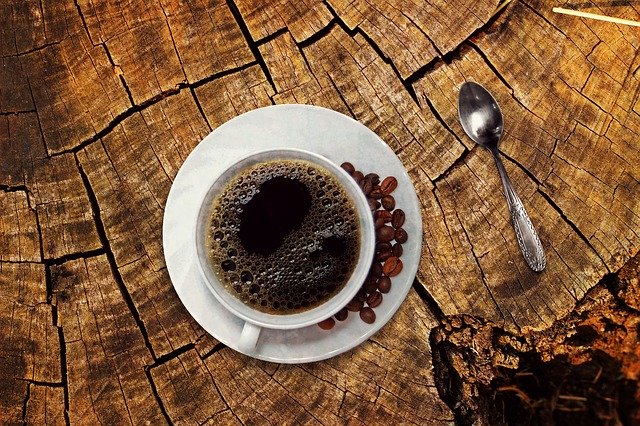
For instance, in a light roast with most of the oily goodness still trapped inside the bean, the oil within the bean provide a sweeter, less intense taste. Some coffee connoisseurs consider this the natural “origin” flavor of the bean, untainted by over roasting.
If you are in to sniffing out or tasting the hints of different flavors, the lighter roast would be the way to go.
Kind of like how a medium-rare or rare steak will have more of the steaks natural flavor vs a charred well-done steak which just tastes like the grill.
Yea kind of a weird analogy, I know. But it kind of works, right?
The coffee oil contains much of the flavors of the coffee however, once at the surface, the oils react with oxygen which changes the flavor complexity of the oils.
It becomes more bitter. That’s why dark roast coffee gives you more of that fuller, bitter, bolder taste we associate with coffee. Not necessarily a bad thing, I personally enjoy a dark roast from time to time, but definitely different.
By the way, this process of the oil reacting with oxygen is called oxidation.
Dry Coffee Beans Can be a Sign of Freshness
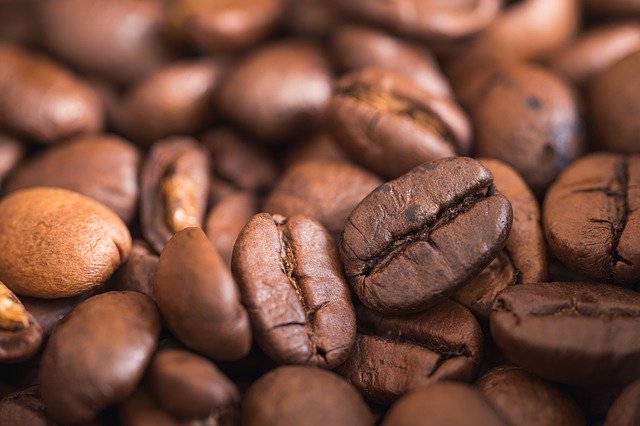
While dry coffee can indicate freshness, you don’t want to drink a non-oily light roast coffee right after it has undergone roasting. You see, there is a degassing period that occurs.
Basically that CO2 which is normally released during the “second crack” of dark roasts will still be released.
Since the bean is no longer exposed to heat in the roaster, this will require time. Usually 48-72 hours. And of course, with time some oil can seep to the surface giving even light and medium roasts an oily sheen.
Dry beans can also be a sign of staleness…. Confusing I know. But it makes sense, and here is why.
Eventually, after all the coffee oil seeps out the coffee beans will begin to dry up. Now you know your coffee beans are stale. If you are desperate you can still drink it but you won’t enjoy it! The flavor is no longer there.
But hey, if it’s all you got, beggars can’t be choosers.
Do Oily Coffee Beans go Stale Faster?
Generally speaking, yes they do.
Unless you have a dark roast, the oily appearance is a result of time. The coffee beans will continue to get oilier and oxidize. Eventually, there will be no oil left in the bean.
The oxidation process will make the beans stale and your coffee becomes pretty boring and flavorless.
This is why a dark roast goes bad faster than a light roast. The dark roast has basically fast-forwarded to a later stage in the oil oxidation process!
Oily Beans Can Mean the Coffee is Stale
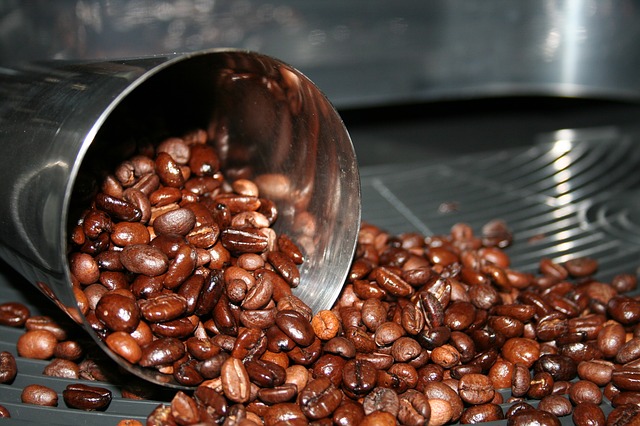
A lot of people see oily coffee as stale coffee. I can see why that is the case.
It’s true, right after the roasting process, no matter how long you roasted the beans, it’s only a matter of time until more and more oil appears on the surface.
It is only logical to assume that a ton of oil means those beans were just sitting out. So yea, you could use that as a general rule of thumb of staleness.
But don’t go throwing away your oily coffee beans right away. A very dark roast can get super oily really fast but still be “fresh.”
If you are willing to take the risk and drink it, I would. Honestly, what is the worst that can happen? You take a sip of the coffee, dramatically spit it out and shout “Curse you Jolly Roast for telling me that oily coffee beans would taste good!” then open up your next bag of fresher coffee?
You Want Your Coffee Beans to Have a Shine
Okay, okay, let us suppose the science is too nerdy for you. You just want to go to the store and buy some good coffee beans. What should you look out for?
Some argue that regardless of roast, a good rule of thumb is that your beans should have some sort of shine to them to indicate freshness.
Here is why.
A dark roast should always have an oily surface, that’s just the science of it. It was heated for a longer period of time and therefore released more oils.
If your dark roast beans have no oily surface on them, that probably means they sat out for a long time.
Light roast on the other hand could come out of the roaster dry. But you don’t want to brew light roast coffee that just underwent roasting. It needs to degas for about 2 days to get the most flavor extraction. Ergo, a light shine of oil should appear indicating it’s ready to be enjoyed!
In both cases, the general rule of thumb is there should be some kind of shine.
Next time you buy some coffee beans, keep an eye out for that shine.
How Can you Make Sure Oily Coffee Beans Don’t Clog your Appliances?
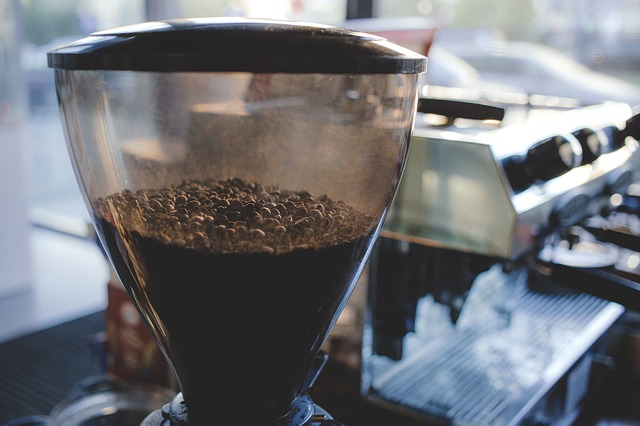
Up until this point we only talked about the science behind oily beans and the flavor aspect. But what about the practical use of it?
One disadvantage of oily coffee beans is that they can cause problems for automatic espresso machine owners. I’m talking about the machines that you pour beans into and outcomes espresso (All in one grinder, milk frother, packer, and espresso maker).
The coffee oils can lead to blockages and ultimately create problems with the coffee machines’ performance.
It can be a pain in the “you know what” to clean.
That’s why a lot of super-automatic coffee machine owners opt for a less oily bean. You don’t want to use a light roast for espresso but there are less oily dark roasts.
Is a Medium Roast the Best of Both Worlds?
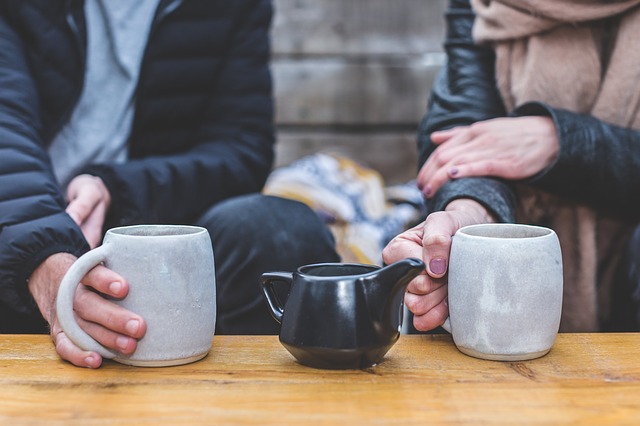
How could a medium roast be the happy medium you ask? I would be happy to tell you.
If you are looking for bold coffee beans that are less oily and have kept the integral flavors of the coffee, well the medium roast might just be the thing for you.
Makes sense, right? You just roast it longer than a light roast but not as much as a dark roast ergo releasing fewer coffee oils.
Less oily, more integral flavors of the coffee, happy medium!
Conclusion
I hope this article made sense and shed some light on the question of whether or not oily coffee beans are a good or bad thing.
Here is a quick summary anyway if you are one of those “too long, didn’t read” kind of people.
Coffee oil is contained within the coffee bean. We release these oils by roasting coffee.
A lighter roast will do a better job of containing the coffee oils within the beans shell. A darker roast, on the other hand, will break down more of the cell walls keeping the oils within, forcing more oil to the surface producing an oily coffee bean.
After roasting, all coffee beans will slowly secrete oil due to a natural “degassing” process (CO2 leaves the bean and oil follows). Therefore the longer coffee sits out the more oily it will become.
However, at a certain point, there is no more oil leaving the coffee beans and through natural oxidation processes the oils eventually break down leaving you dry stale beans.
Therefore, oily beans are a better indication of roast instead of freshness.
Oily coffee beans are neither a bad thing nor a good thing… it’s just a thing. Although more oil is an indication that the coffee beans have been sitting out longer, the best indicator of stale coffee is the lack of oil.
Wow. That’s enough brainpower for one day. Time to grab a cup of coffee and watch some TV.
Cheers.
Oh, wait! Leave a comment if you have any more questions or can add anything to this article. If your additional information is accurate (And you are not a mean person) I may add it to the post!